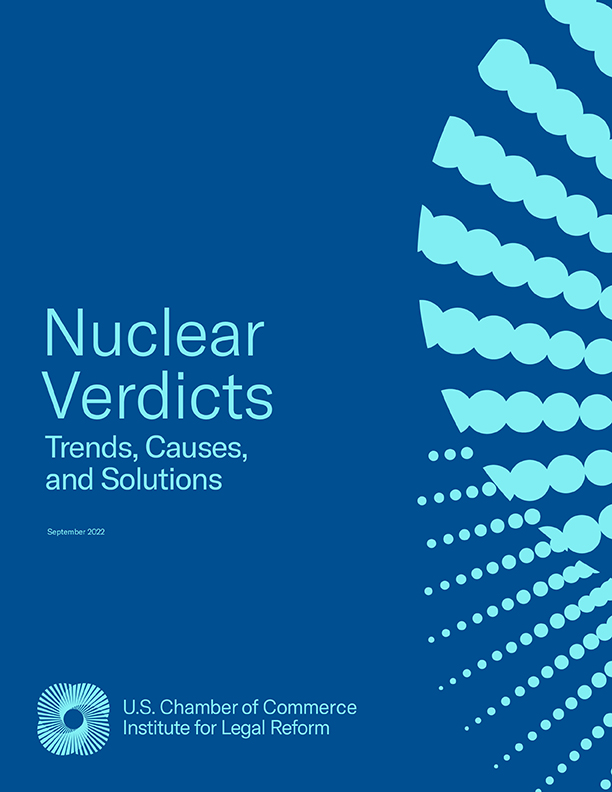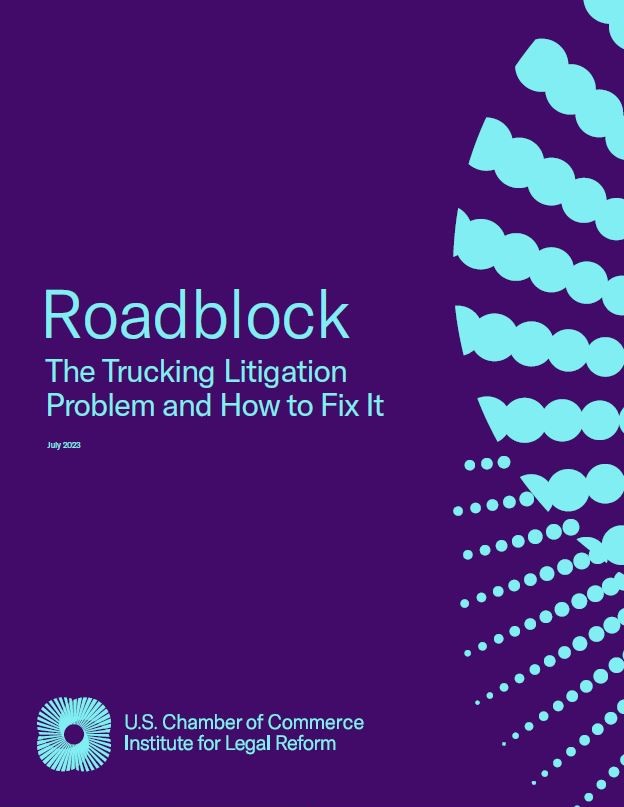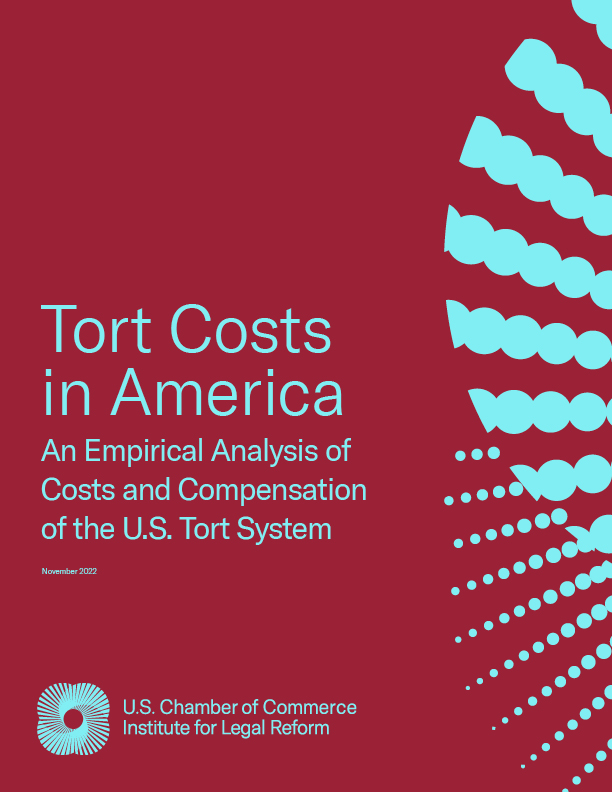Nuclear verdicts drive up the costs of goods and services, make insurance riskier to offer and more difficult to obtain, and undermine fundamental fairness and predictability in the rule of law. And, as this paper reveals, the problem is getting worse.
The latest edition of ILR’s research on nuclear verdicts (jury verdicts worth $10 million or more) examines 1,288 such verdicts awarded in the 10-year period between 2013 and 2022. We find that while nuclear verdicts dropped off significantly during the period of court closures caused by the COVID-19 pandemic, they quickly rebounded to near-record highs by the third quarter of 2021. Indeed, excluding the pandemic years, nuclear verdicts are on an upward trajectory.
ILR’s research dives into the factors driving this trend, looking at different case types behind these verdicts and their variation across the states. Among other findings, the paper shows that:
- California, Florida, New York, and Texas collectively produce half of the nation’s nuclear verdicts.
- Product liability nuclear verdicts are increasing in size far more quickly than other verdict types, rising to a median value of $36 million in 2022 from a starting median of $24 million in 2013 (a 50% increase).
- Noneconomic compensatory damages continue to play an outsized role in nuclear verdicts. In fact, in six out of 10 years in the dataset, the total amount of noneconomic damages exceeded the total amount of economic damages and punitive damages combined.
If left to develop along their current trajectory, nuclear verdicts promise to become further entrenched and to continue threatening livelihoods and raising costs across the economy. Our paper diagnoses a range of phenomena that drive nuclear verdicts, including trial lawyer advertising, third party litigation funding, and plaintiffs’ lawyer tactics like the reptile theory, and concludes with a set of solutions that policymakers can implement.



